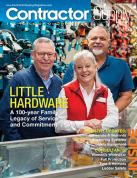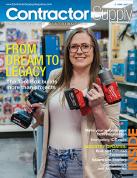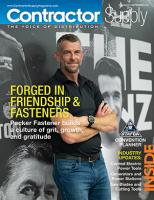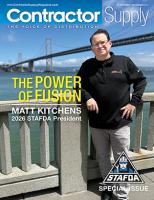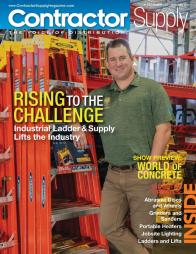Exclusive: A 7-step method for hiring the best
Use these steps to separate poor or good prospects from superstars.
This is the ninth in a series of articles by Dr. Michael Mercer, Ph.D.

You can use pre-employment tests, two types of interviews and more using this step-by-step method to hire applicants who are likely to be “superstar” employees:
+ highly productive
+- low-turnover
Important:
* If the applicant rates highly on a step, then do the next step
* If the applicant rates poorly on a step, then do not do next step
* Focus on hiring applicants you rate positively on ALL 7 prediction methods.
1st Prediction Method = Brief Initial Screening Interview (BISI)
If an applicant’s application or resume looks suitable, then conduct BISI, a customized 15 minute over-phone or in-person interview. BISI quickly reveals if an applicant has biographical data (bio-data) similar to your company’s “superstar” employees.
For example, at one company I consult to, I discovered “superstar” Sales Reps had these bio-data similarities before this company hired them:
Work:
(a) 1 or 2 previous sales jobs
(b) only 1 or 2 jobs before applying at the company
(c) kept prior jobs 2 – 5 years
Education:
(a) earned B.A. from state universities
(b) majored in business or liberal arts
(c) worked part-time throughout college
(d) college jobs entailed a lot of people contact
* Pay:
> Earned less than likely first year compensation at this company
Vocal Style:
> Displayed high energy
So, that company’s BISI screened-in applicants with similar bio-data of work, education, pay, and vocal style – and screened-out other applicants.
2nd Prediction Method = Customized Pre-employment Tests
If the applicant did well on 1st Prediction Method – BISI, then you can have the applicant take customized pre-employment tests. Use tests specifically designed to screen applicants and predict:
A. Work Behavior
– e.g., interpersonal skills, personality, and motivations
B. Mental Abilities
– e.g., reasoning, vocabulary, math, grammar, and handling small detail
Importantly, the test must use customized “benchmark scores” based on scores of your company’s “superstar” employees. With customized “benchmark scores,” you instantly see if an applicant scored similar to your company’s “superstar” employees.
Note: When you are hiring applicants for “white-collar” or skilled jobs, you use both Work Behavior and Mental Abilities tests. But, when you are hiring applicants for “blue-collar” or laborer jobs, you use a different type of test – a Dependability test. The Dependability test helps you predict important dependability factors, such as,
- work ethic
- impulsiveness
- theft/stealing concerns
- substance abuse concerns
3rd Prediction Method = In-Depth, Customized “In-Depth Interview Form”
If you decide the applicant rated high on both 1st and 2nd Prediction Methods, then you may conduct In-Depth Interview (or what I call a “Polite Interrogation”).
Crucial: Create a customized In-Depth Interview Form document for each job, including
(a) 6 – 9 key “make-or-break” job talents
(b) questions to ask
(c) note-taking
(d) ratings
Importantly, you must provide seminar training to teach managers how to use your customized In-Depth Interview Form to assess applicants. Without superb training, interviewers do lousy interviews, and fail to hire the best.
4th Prediction Method = Role-Play or Work Simulation
If the applicant did well on the 3rd Prediction Method, then have the applicant do Role-Play or Work Simulation immediately after In-Depth Interview. Do a Role-Play for some jobs, e.g., Sales Rep jobs. Or do Work Simulation, e.g., for Administrative jobs. Such 15-30 minute Role-Play or Work Simulation shows you if the applicant has critical job skills.
5th Prediction Method = Realistic Job Observation (RJO)
If you decide the applicant did well on 1st – 4th Prediction Methods, then you might do RJO: For RJO, the applicant spends 2-4 hours watching an employee doing the job. Benefit: Applicants who received RJO are less likely to (a) accept job offer – but, if they accept, (b) turnover.
Reason: The RJO assures they see what they are getting themselves into!
6th Prediction Method = Reference Checks & Drug Tests
IF your company decides the applicant did well on Prediction Methods 1-5, then you do Reference Checks and, perhaps, Drug Tests. If te applicant gets a positive rating, then then your company does 7th Prediction Method. But, if the applicant gets a negative rating, then you probably will not want to stop considering the applicant.
7th Prediction Method = 1 Executive Must Approve ALL Hiring
If the applicant did well on Prediction Methods 1-6, then one executive at your company reviews Applicant Rating Summary Form.
Your company’s quick Applicant Summary Rating Form
- summarizes ratings – positive, average, or negative – on Prediction Methods 1-6
- “forces” managers to use your structured hiring steps
Important: If the applicant’s ratings on Prediction Methods 1-6 include (a) ALL positive ratings, then executive may approve hiring applicant or (b) average or negative ratings, then the executive may not allow applicant to be hired
How Much Time Do You Need to Hire the Best?
Many managers moan they feel time-crunched, and ask how much time these seven steps require. Two answers to help you:
1st Answer = If an applicant does well on Prediction Methods 1-7, then you invested 2-3 hours to hire the best
2nd Answer = Ask yourself: How much time and money did you waste when you hired average or below-average applicants? You wasted many hours – plus salary, benefits and low productivity – because you did not invest only 2-3 hours to hire the best! CS
Michael Mercer, Ph.D., created 3 “Forecaster Tests” – pre-employment tests. Companies use his tests to predict which job applicants may succeed (or fail) on-the-job, if hired. Dr. Mercer wrote the book, Hire the Best & Avoid the Rest. You can see information about his 3 “Forecaster” pre-employment tests at www.MercerSystems.com.
© Copyright 2019 Mercer Systems LLC Reprinted with permission.







